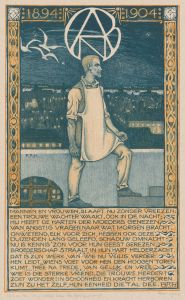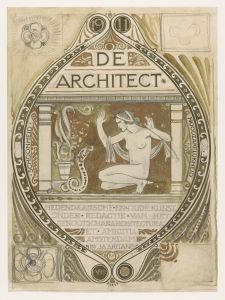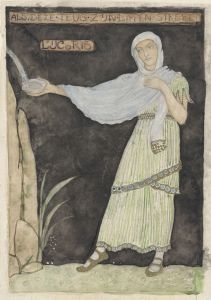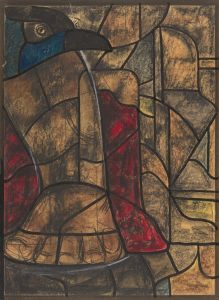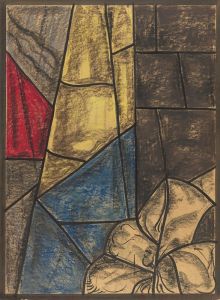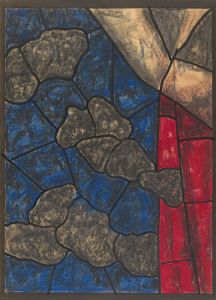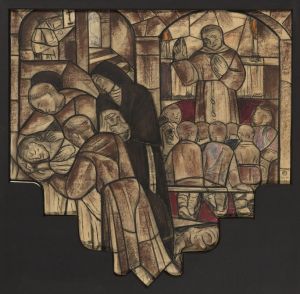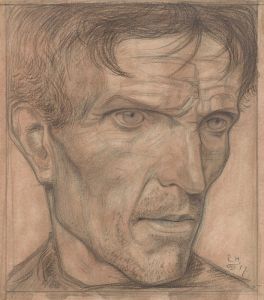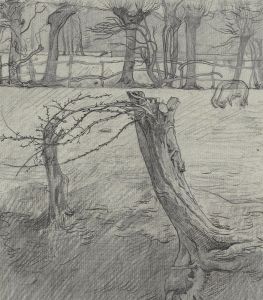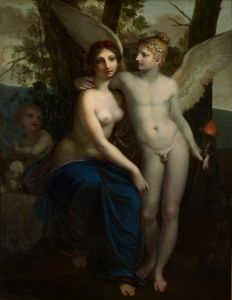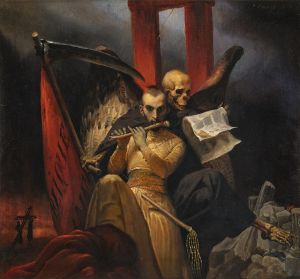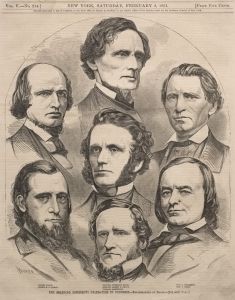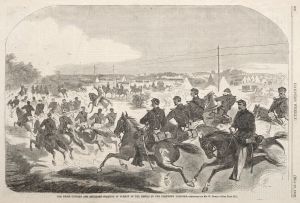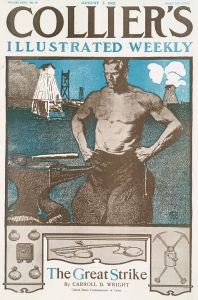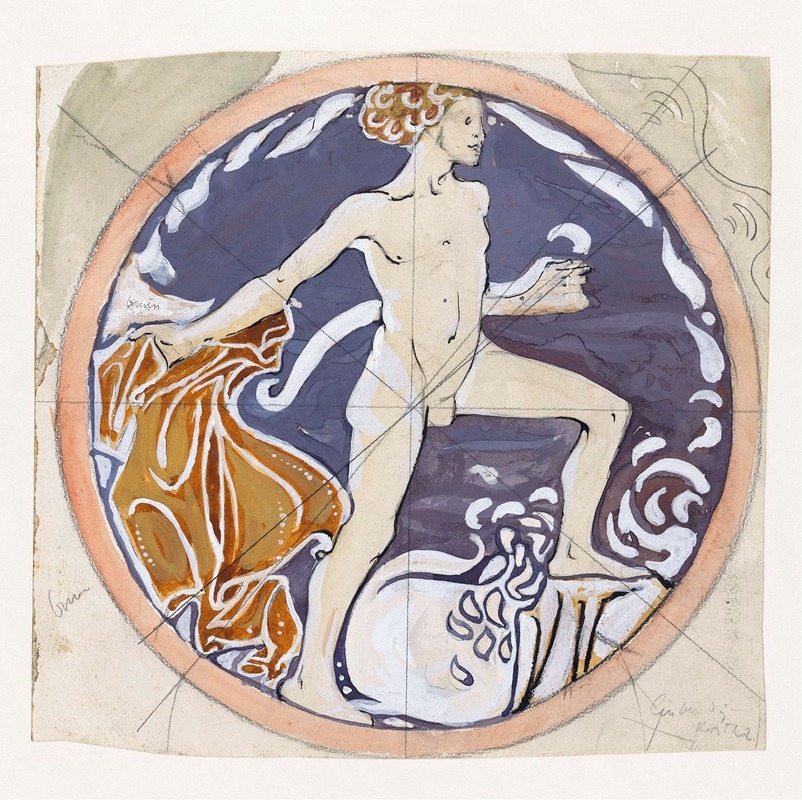
Ontwerp voor schildering Algemene Nederlandsche Diamantbewerkersbond; Vrijheid
A hand-painted replica of Richard Nicolaüs Roland Holst’s masterpiece Ontwerp voor schildering Algemene Nederlandsche Diamantbewerkersbond; Vrijheid, meticulously crafted by professional artists to capture the true essence of the original. Each piece is created with museum-quality canvas and rare mineral pigments, carefully painted by experienced artists with delicate brushstrokes and rich, layered colors to perfectly recreate the texture of the original artwork. Unlike machine-printed reproductions, this hand-painted version brings the painting to life, infused with the artist’s emotions and skill in every stroke. Whether for personal collection or home decoration, it instantly elevates the artistic atmosphere of any space.
Richard Nicolaüs Roland Holst's Ontwerp voor schildering Algemene Nederlandsche Diamantbewerkersbond; Vrijheid (Design for the Painting of the General Dutch Diamond Workers' Union; Freedom) is a notable work by the Dutch artist and designer Richard Roland Holst (1868–1938). Roland Holst was a prominent figure in the Dutch Arts and Crafts movement and was known for his socially engaged art, which often reflected themes of labor, solidarity, and social justice.
This particular design was created as part of a commission for the Algemene Nederlandsche Diamantbewerkersbond (ANDB), or the General Dutch Diamond Workers' Union, one of the most influential labor unions in the Netherlands during the late 19th and early 20th centuries. The ANDB was established in 1894 and became a symbol of the organized labor movement in the Netherlands, advocating for workers' rights and better working conditions, particularly for those in the diamond industry.
Roland Holst's design, Vrijheid (Freedom), reflects the ideals and aspirations of the labor movement. The artwork is characterized by its allegorical and symbolic elements, which were typical of Roland Holst's style. The central theme of "freedom" is depicted through figures and motifs that emphasize liberation, unity, and the dignity of labor. The design was intended to inspire and uplift workers, aligning with the ANDB's mission to empower its members and promote social progress.
The work is part of a larger series of designs and decorations that Roland Holst created for the ANDB. These include murals, stained glass windows, and other artistic contributions to the union's headquarters in Amsterdam, which was designed by the architect Hendrik Petrus Berlage. Roland Holst's collaboration with Berlage and the ANDB is considered a significant example of the integration of art and architecture in service of social ideals.
Today, Ontwerp voor schildering Algemene Nederlandsche Diamantbewerkersbond; Vrijheid is recognized as an important example of early 20th-century Dutch art and its connection to the labor movement. It reflects the broader cultural and political currents of the time, particularly the role of art in advocating for social change and the empowerment of working-class communities.





